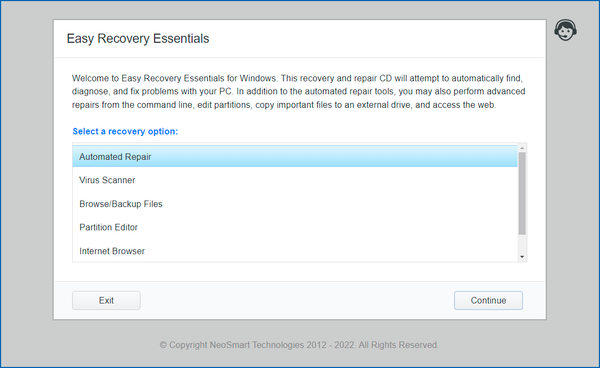 Hot on the heels of an update to our rust port of PrettySize we have a new release of PrettySize.NET that brings new features and capabilities to the best .NET library for formatting file sizes for human-readable output and display.
Hot on the heels of an update to our rust port of PrettySize we have a new release of PrettySize.NET that brings new features and capabilities to the best .NET library for formatting file sizes for human-readable output and display.
PrettySize 3.1, available on GitHub and via Nuget, has just been released and contains a number of improvements and requested features and newfound abilities to make handling file sizes (and not just formatting them) easier and more enjoyable.



 NeoSmart Technologies is pleased to announce the immediate availability of the latest additions to its Easy Recovery Essentials™ for Windows line of bootable repair and recovery tools for Microsoft Windows: EasyRE for Windows 11 and EasyRE Pro for Windows 11. Continuing a tradition that started with Windows 10, our Windows 11 boot recovery USB is currently available as a completely free download for anyone that needs to fix their Windows 11 installation after a virus infection or a Windows Update gone wrong.
NeoSmart Technologies is pleased to announce the immediate availability of the latest additions to its Easy Recovery Essentials™ for Windows line of bootable repair and recovery tools for Microsoft Windows: EasyRE for Windows 11 and EasyRE Pro for Windows 11. Continuing a tradition that started with Windows 10, our Windows 11 boot recovery USB is currently available as a completely free download for anyone that needs to fix their Windows 11 installation after a virus infection or a Windows Update gone wrong.
 Windows 11 is here and it comes with a new version of Segoe UI Emoji, the font that’s used across the OS to render various emoji from Unicode codepoint sequences to the emoji you see on screen (developers:
Windows 11 is here and it comes with a new version of Segoe UI Emoji, the font that’s used across the OS to render various emoji from Unicode codepoint sequences to the emoji you see on screen (developers: 

 It’s been a while since we
It’s been a while since we